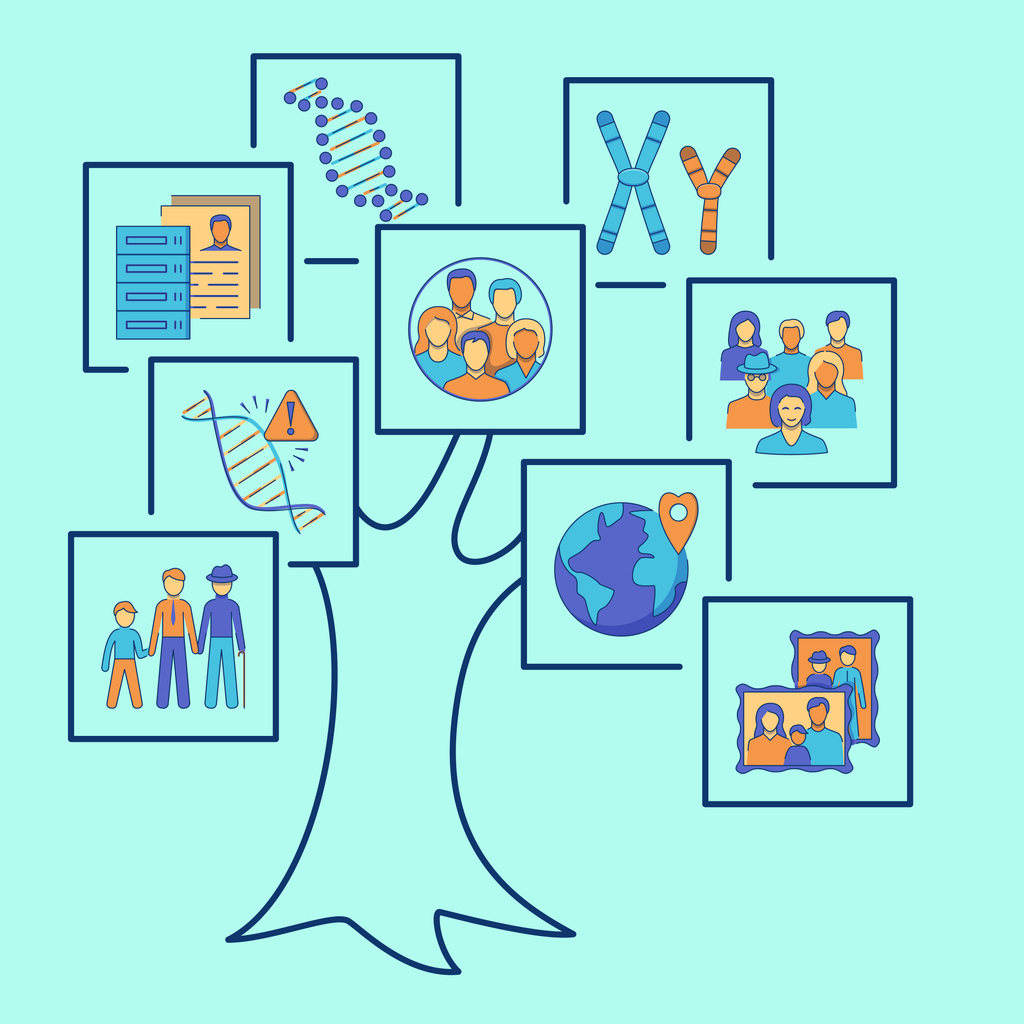Key Takeaways:
- Genetic ancestry provides a framework for understanding population-level variation in drug response and optimizing pharmacogenomic strategies.
- Variants in CYP2C19, TPMT, NUDT15, and the CYP2C cluster exhibit population-specific differences that influence drug dosing and adverse event risk.
- Incorporating ancestry-informed pharmacogenomic data into clinical guidelines can improve therapeutic outcomes.
Introduction
Pharmacogenomics explores how genetic variation among individuals contributes to differences in drug response, including efficacy and adverse effects.1 Ancestry has emerged as an important consideration to understand population-wide genetic variation and its implications for drug response.2 Incorporating ancestry-informed genetic data into clinical decision-making is critical for advancing precision medicine and maximizing efficacy.
Ancestry vs Race
Genetic ancestry, derived from genome-wide markers, provides insight into an individual’s geographic origins. In contrast, race and ethnicity are socially constructed categories shaped by historical context and lived experiences.3 Although race and ethnicity categories are frequently employed in biomedical research, they often represent broad sociocultural constructs that may lack the granularity of genetically inferred ancestry.4
Despite the distinction, observer-reported race and ethnicity can approximate genetic ancestry for certain populations in large biorepositories such as BioVU, particularly among individuals of European and African descent.5
Still, due to genetic heterogeneity within racial and ethnic categories, they remain limited surrogates for population-level pharmacogenetic insights.3 Instead, ancestry-informed genetic markers offer a more accurate approach for understanding biologically-driven health-related patterns and guiding precision medicine.3
Drug Response Differences Across Genetic Ancestry Populations
Genetic variants can influence how individuals respond to medical treatments, affecting both efficacy and safety. These variants may show patterns of distribution across different ancestral groups, as illustrated in the examples below.
-
- CYP2C19 and clopidogrel. Clopidogrel is a prodrug that requires activation by the CYP2C19 enzyme. There is an increased risk of adverse cardiovascular events in individuals with CYP2C19 loss-of-function alleles, due to reduced formation of clopidogrel’s active metabolite and diminished antiplatelet effect. This may have significant clinical implications, as more than half of individuals of Asian descent carry at least one loss-of-function allele in the CYP2C19 gene.6
- CYP2C19 and omeprazole. Omeprazole is primarily metabolized by the CYP2C19 enzyme. Individuals with reduced CYP2C19 activity may experience elevated plasma drug levels, which can increase the risk of adverse effects.7 The FDA-approved drug label recommends a lower dosage for individuals of Asian descent based on population-level risk, even without confirming their CYP2C19 genotype.7
- CYP2C cluster and warfarin. rs12777823 in the CYP2C cluster has been associated with lower warfarin dose requirements in individuals of African descent.8 Integrating rs12777823 into pharmacogenetic dosing models improves the accuracy of warfarin dose prediction in African ancestry populations.8 Without accounting for this variant, standard dosing models may overestimate dose needs and increase bleeding risk.
- TPMT/NUDT15 and azathioprine. TPMT and NUDT15 contribute to the metabolism of azathioprine.9 Individuals with a deficiency in these enzymes may metabolize the drug poorly, accumulating high intracellular levels of thioguanine nucleotides and increasing the risk for myelosuppression.9 Thiopurine intolerance is primarily linked to TPMT deficiency in those of European or African ancestry, while NUDT15 deficiency is more commonly observed in individuals of East Asian descent.9
- HLA-B*15:02 and carbamazepine. Individuals carrying the HLA-B*15:02 allele have an increased risk for Stevens-Johnson syndrome or toxic epidermal necrolysis when treated with carbamazepine.10 The allele is most prevalent in individuals of Southeast Asian descent.10 Because of this risk, regulatory agencies recommend genetic screening before initiating carbamazepine therapy in at-risk populations.
How is Ancestry Being Used in Biomedical Research?
- Ancestry inference. Researchers can leverage large resource databases like the Genome Aggregation Database (gnomAD™), 1000 Genomes Project, and HapMap 3 to estimate population structure and ancestral origins. Common analytical approaches for genetic ancestry estimation include principal component analysis, multi-dimensional scaling, local ancestry inference and model-based methods, such as ADMIXTURE11 and RFMix12.
- Population pharmacogenomic maps. Population-level pharmacogenomic studies suggest that differences in drug response are partly driven by genetic variants (CYP2D6, CYP2C19, DPYD, TPMT, NUDT15, SLC22A1, CFTR, HLA-A, HLA-B, G6PD) whose frequencies vary across geographic groups.13
Conclusion
Pharmacogenetic research combined with ancestry-informed data provides critical insights for optimizing drug therapy. By identifying population-specific genetic variants that influence drug metabolism and response, clinicians can tailor dosing strategies to increase efficacy and reduce adverse effects. Integrating genetic testing and ancestry estimation into clinical workflows will be essential for improving therapeutic outcomes and minimizing variability in drug efficacy across diverse populations.
References
- Roses AD. Pharmacogenetics and the practice of medicine. Nature. 2000;405(6788):857-865. doi:10.1038/35015728
- Karamperis K, Katz S, Melograna F, et al. Genetic ancestry in population pharmacogenomics unravels distinct geographical patterns related to drug toxicity. iScience. 2024;27(10):110916. doi:10.1016/j.isci.2024.110916
- Krainc T, Fuentes A. Genetic ancestry in precision medicine is reshaping the race debate. Proc Natl Acad Sci U S A. 2022;119(12):e2203033119. doi:10.1073/pnas.2203033119
- Borrell LN, Elhawary JR, Fuentes-Afflick E, et al. Race and Genetic Ancestry in Medicine – A Time for Reckoning with Racism. N Engl J Med. 2021;384(5):474-480. doi:10.1056/NEJMms2029562
- Dumitrescu L, Ritchie MD, Brown-Gentry K, et al. Assessing the accuracy of observer-reported ancestry in a biorepository linked to electronic medical records. Genet Med. 2010;12(10):648-650. doi:10.1097/GIM.0b013e3181efe2df
- Sorich MJ, Rowland A, McKinnon RA, Wiese MD. CYP2C19 genotype has a greater effect on adverse cardiovascular outcomes following percutaneous coronary intervention and in Asian populations treated with clopidogrel: a meta-analysis. Circ Cardiovasc Genet. 2014;7(6):895-902. doi:10.1161/CIRCGENETICS.114.000669
- Dean L, Kane M. Omeprazole Therapy and CYP2C19 Genotype. In: Pratt VM, Scott SA, Pirmohamed M, Esquivel B, Kattman BL, Malheiro AJ, eds. Medical Genetics Summaries. National Center for Biotechnology Information (US); 2012.
- Perera MA, Cavallari LH, Limdi NA, et al. Genetic variants associated with warfarin dose in African-American individuals: a genome-wide association study. Lancet. 2013;382(9894):790-796. doi:10.1016/S0140-6736(13)60681-9
- Dean L. Azathioprine Therapy and TPMT and NUDT15 Genotype. In: Pratt VM, Scott SA, Pirmohamed M, Esquivel B, Kattman BL, Malheiro AJ, eds. Medical Genetics Summaries. National Center for Biotechnology Information (US); 2012.
- Dean L. Carbamazepine Therapy and HLA Genotype. In: Pratt VM, Scott SA, Pirmohamed M, Esquivel B, Kattman BL, Malheiro AJ, eds. Medical Genetics Summaries. National Center for Biotechnology Information (US); 2012.
- Alexander DH, Novembre J, Lange K. Fast model-based estimation of ancestry in unrelated individuals. Genome Res. 2009;19(9):1655-1664. doi:10.1101/gr.094052.109
- Maples BK, Gravel S, Kenny EE, Bustamante CD. RFMix: a discriminative modeling approach for rapid and robust local-ancestry inference. Am J Hum Genet. 2013;93(2):278-288. doi:10.1016/j.ajhg.2013.06.020
- 13. Zhou Y, Lauschke VM. Population pharmacogenomics: an update on ethnogeographic differences and opportunities for precision public health. Hum Genet. 2022;141(6):1113-1136. doi:10.1007/s00439-021-02385-x


